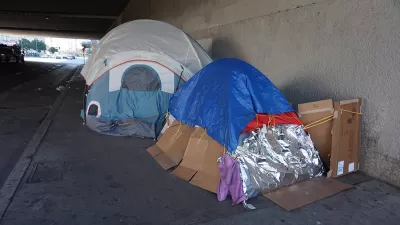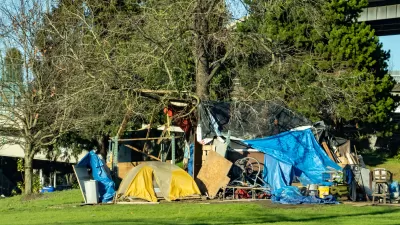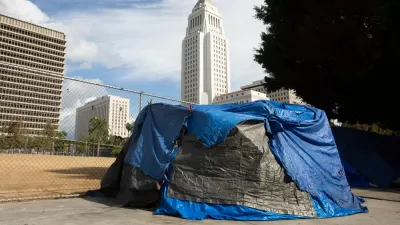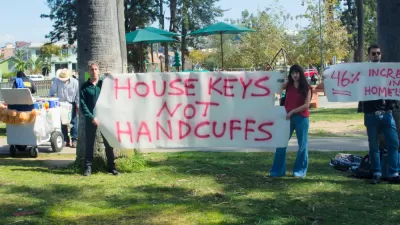The Los Angeles Times crunched data from the 2019 point-in-time count of homelessness in Los Angeles County. What they found diverged profoundly from official findings.

"Mental illness, substance abuse and physical disabilities are much more pervasive in Los Angeles County’s homeless population than officials have previously reported," report Doug Smith and Benjamin Oreskes.
"The Times examined more than 4,000 questionnaires taken as part of this year’s point-in-time count and found that about 76% of individuals living outside on the streets reported being, or were observed to be, affected by mental illness, substance abuse, poor health or a physical disability," add Smith and Oreskes.
Those findings contrast findings from the same data presented by the Los Angeles Homeless Service Authority, the agency which conducted the survey. "In its presentation of the results to elected officials earlier this year, the agency said only 29% of the homeless population had either a mental illness or substance abuse disorder and, therefore, 71% 'did not have [pdf] a serious mental illness and/or report substance use disorder.'"
Leadership at the homeless services authority id not dispute the findings of the Times analysis, instead blaming the discrepancy on the format for the report required by federal regulators.
But wait; there's more: "The Times analysis aligns with a national study released Sunday by the California Policy Lab at UCLA, which found even higher rates in most categories. It also found that a mental health “concern” affected 78% of the unsheltered population and a substance abuse “concern,” 75%."
FULL STORY: Are many homeless people in L.A. mentally ill? New findings back the public’s perception

Alabama: Trump Terminates Settlements for Black Communities Harmed By Raw Sewage
Trump deemed the landmark civil rights agreement “illegal DEI and environmental justice policy.”

Planetizen Federal Action Tracker
A weekly monitor of how Trump’s orders and actions are impacting planners and planning in America.

The 120 Year Old Tiny Home Villages That Sheltered San Francisco’s Earthquake Refugees
More than a century ago, San Francisco mobilized to house thousands of residents displaced by the 1906 earthquake. Could their strategy offer a model for the present?

Ken Jennings Launches Transit Web Series
The Jeopardy champ wants you to ride public transit.

BLM To Rescind Public Lands Rule
The change will downgrade conservation, once again putting federal land at risk for mining and other extractive uses.

Indy Neighborhood Group Builds Temporary Multi-Use Path
Community members, aided in part by funding from the city, repurposed a vehicle lane to create a protected bike and pedestrian path for the summer season.
Urban Design for Planners 1: Software Tools
This six-course series explores essential urban design concepts using open source software and equips planners with the tools they need to participate fully in the urban design process.
Planning for Universal Design
Learn the tools for implementing Universal Design in planning regulations.
Clanton & Associates, Inc.
Jessamine County Fiscal Court
Institute for Housing and Urban Development Studies (IHS)
City of Grandview
Harvard GSD Executive Education
Toledo-Lucas County Plan Commissions
Salt Lake City
NYU Wagner Graduate School of Public Service





























